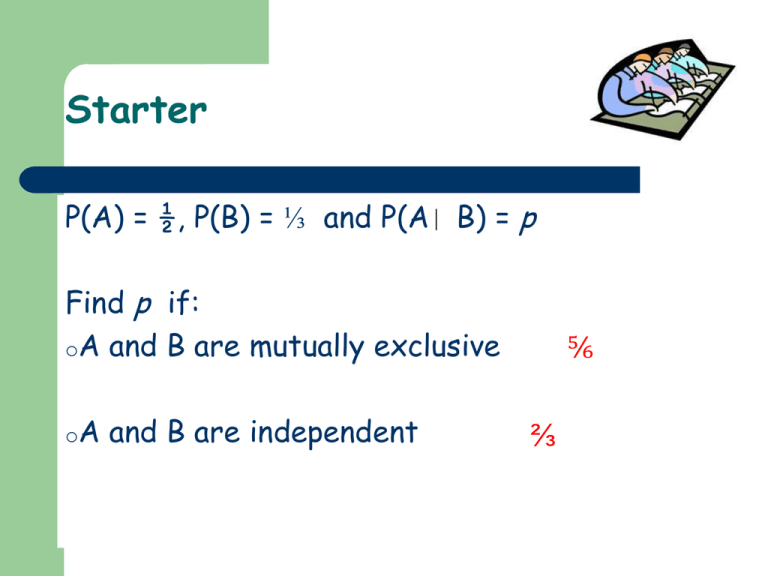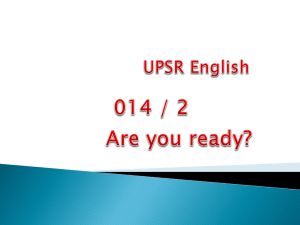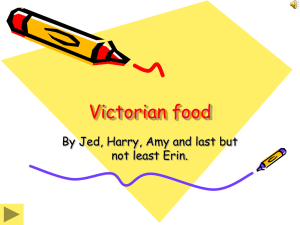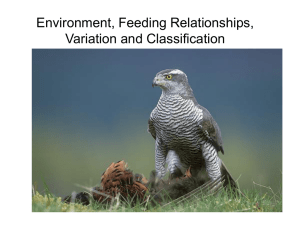P(A ∩ B) - Mrs A`s Weebly
advertisement

Starter P(A) = ½, P(B) = ⅓ and P(A È B) = p Find p if: oA and B are mutually exclusive oA and B are independent ⅚ ⅔ Note 7: Conditional Probability Probabilities are often influenced by the occurrence or non-occurrence of previous events. These probabilities are called conditional and are written P(A/B). (The probability of A given B.) P(A/B) = P(A ÇB) P(B) If events A and B are independent, then event A will not be influenced by whether event B has occurred: P(A/B) = P(A ∩ B) P(B) = P(A).P(B) P(B) = P(A) Example: The prob a student eats his lunch is 0.5. The prob his sister eats her lunch is 0.6. The prob that the girl eats her lunch given that the boy eats his is 0.9. Determine the prob that: both eat their lunch P(girl eats/boy eats) = P(Girl and Boy eat) P(Boy eats) 0.9 = P(Girl and Boy eat) 0.5 P(Girl and Boy eat) = 0.9 x 0.5 = 0.45 Example: The prob a student eats his lunch is 0.5. The prob his sister eats her lunch is 0.6. The prob that the girl eats her lunch given that the boy eats his is 0.9. Determine the prob that: The boy eats his lunch given that the girl eats hers P(boy eats/girl eats) = = P(Girl and Boy eat) P(Girl eats) 0.45 0.6 = 0.75 Example: The prob a student eats his lunch is 0.5. The prob his sister eats her lunch is 0.6. The prob that the girl eats her lunch given that the boy eats his is 0.9. Determine the prob that: At least one of them eats their lunch P(At least one eats) = P(Boy eats) + P(Girl eats) – P(both eat) = 0.5 + 0.6 – 0.45 = 0.65 Page 141 Exercise F








